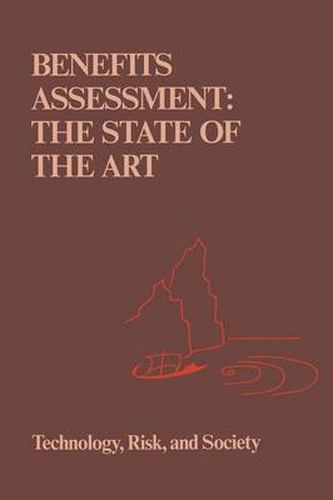Readings Newsletter
Become a Readings Member to make your shopping experience even easier.
Sign in or sign up for free!
You’re not far away from qualifying for FREE standard shipping within Australia
You’ve qualified for FREE standard shipping within Australia
The cart is loading…






This title is printed to order. This book may have been self-published. If so, we cannot guarantee the quality of the content. In the main most books will have gone through the editing process however some may not. We therefore suggest that you be aware of this before ordering this book. If in doubt check either the author or publisher’s details as we are unable to accept any returns unless they are faulty. Please contact us if you have any questions.
In recent years there has been substantial interest in benefits assessment methods, especially as these methods are used to assess health, safety, and environmental issues. At least part of this interest can be traced to Executive Order 12291, issued by President Ronald Reagan in 1981. This Executive Order requires Federal agencies to perform benefits assessments of pro posed major regulations and prohibits them from taking regulatory action unless potential benefits exceed potential costs to society. Heightened interest in benefits assessment methods has in tum given rise to greater recognition of the inherent difficulties in performing such assess ments. For example, many benefits that are intuitively felt to be most important are also among the most difficult to measure. It can be difficult to identify the full range of both benefits and costs. The choice of an appro priate discount rate for comparing benefits and costs over time is proble matic. Even when benefits are quantifiable in principle and agreement can be reached on their valuation, required d,ata may not be available. Thus considerable uncertainty is built into most benefit estimates, even when they are based on the best available data. In light of the complexities and difficulties associated with the perform ance of a benefits assessment, this book reviews the current state of theoretical and methodological knowledge in the field. The review is extensive in that it covers over fifty years of research, theoretical develop ment, and practice.
$9.00 standard shipping within Australia
FREE standard shipping within Australia for orders over $100.00
Express & International shipping calculated at checkout
This title is printed to order. This book may have been self-published. If so, we cannot guarantee the quality of the content. In the main most books will have gone through the editing process however some may not. We therefore suggest that you be aware of this before ordering this book. If in doubt check either the author or publisher’s details as we are unable to accept any returns unless they are faulty. Please contact us if you have any questions.
In recent years there has been substantial interest in benefits assessment methods, especially as these methods are used to assess health, safety, and environmental issues. At least part of this interest can be traced to Executive Order 12291, issued by President Ronald Reagan in 1981. This Executive Order requires Federal agencies to perform benefits assessments of pro posed major regulations and prohibits them from taking regulatory action unless potential benefits exceed potential costs to society. Heightened interest in benefits assessment methods has in tum given rise to greater recognition of the inherent difficulties in performing such assess ments. For example, many benefits that are intuitively felt to be most important are also among the most difficult to measure. It can be difficult to identify the full range of both benefits and costs. The choice of an appro priate discount rate for comparing benefits and costs over time is proble matic. Even when benefits are quantifiable in principle and agreement can be reached on their valuation, required d,ata may not be available. Thus considerable uncertainty is built into most benefit estimates, even when they are based on the best available data. In light of the complexities and difficulties associated with the perform ance of a benefits assessment, this book reviews the current state of theoretical and methodological knowledge in the field. The review is extensive in that it covers over fifty years of research, theoretical develop ment, and practice.